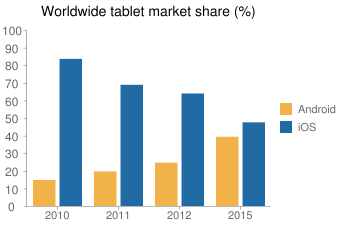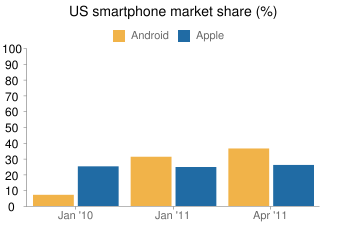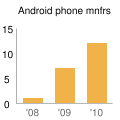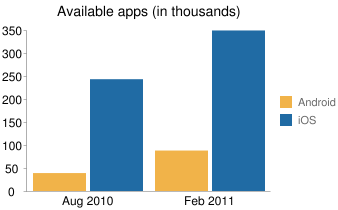Most people are aware of the subscription periodical options that are available on the iOS platform. If you aren’t familiar with it, users of iOS devices can subscribe to newspapers and magazines for delivery right on their device. Users get the content that they want and Apple gets their typical 30% cut of revenue. Publishers have a lot of issues with the Apple way. No publisher can offer a subscription on an iPad unless they also offer an in-app subscription option. In-app purchasing is simple, secure and Apple makes giving your personal information to the publisher an option, so a great many users go that route. Every time an iOS device user buys a subscription this way Apple gets a 30% cut. They don’t create the content, they don’t deliver the content. They simply handle the subscription and are paid handsomely to do it.
 On the Android platform there is no integrated method for handling these subscriptions, so a group of five publishers have teamed up to offer their own solution, called Next Issue Media. Calling it the “Hulu for magazines”, Time, Inc., Hearst, Conde Nast, Meredith, and News Corp have combined their efforts and created their own content delivery option for Android and soon for webOS as well.
On the Android platform there is no integrated method for handling these subscriptions, so a group of five publishers have teamed up to offer their own solution, called Next Issue Media. Calling it the “Hulu for magazines”, Time, Inc., Hearst, Conde Nast, Meredith, and News Corp have combined their efforts and created their own content delivery option for Android and soon for webOS as well.
Following the iOS model, Next Issue Media will keep a 30% cut of revenue, but that revenue will be split with the device maker (read as Next Issue Media will be crapware that you cannot remove from your phone) and the collective, so the publishers share will be higher than what is available on the iOS subscription platform.
That’s all good and fine for the publisher, but not for the subscribers because there is a huge built-in privacy concern with Next Issue Media; if you subscribe to a magazine through Next Issue Media the publisher gets your name, address, email address, phone number and credit card number as part of the deal. Make no mistake, that’s what the publishers are really after in this deal.
 The problem for the subscriber comes to light when too many people get too much of your information. Using the Google method, Google does know a lot about you, but they keep it to themselves. An AdWords or DoubleClick ad publisher doesn’t get access to my name, address, email address, browsing history or anything else. I might hate ads, but at least Google isn’t handing out my credit card number.
The problem for the subscriber comes to light when too many people get too much of your information. Using the Google method, Google does know a lot about you, but they keep it to themselves. An AdWords or DoubleClick ad publisher doesn’t get access to my name, address, email address, browsing history or anything else. I might hate ads, but at least Google isn’t handing out my credit card number.
A Google solution would be the ultimate answer to privacy concerns from users like me. Sell me my subscription through Android Market. Make sharing my name, address and email address optional, even if the option is yes by default, but for the love of all that is good and holy in the universe, don’t hand out my credit card number.
I’ve subscribed to the publication and the only place that needs to have my credit card number is the place that is charging me. The publisher of the magazine has no use for, nor right to having access to my credit card information. If subscriptions were offered through Android Market and if in-app subscriptions were required as they are on iOS most users would go that route, just like they do on iOS. In the end it is a more safe and secure option.
Step up here Google. If nothing is done to integrate magazine and newspaper subscriptions into Android Market then periodicals will become as fragmented as the OS is.
 On the Android platform there is no integrated method for handling these subscriptions, so a group of five publishers have teamed up to offer their own solution, called Next Issue Media. Calling it the “Hulu for magazines”, Time, Inc., Hearst, Conde Nast, Meredith, and News Corp have combined their efforts and created their own content delivery option for Android and soon for webOS as well.
On the Android platform there is no integrated method for handling these subscriptions, so a group of five publishers have teamed up to offer their own solution, called Next Issue Media. Calling it the “Hulu for magazines”, Time, Inc., Hearst, Conde Nast, Meredith, and News Corp have combined their efforts and created their own content delivery option for Android and soon for webOS as well.Following the iOS model, Next Issue Media will keep a 30% cut of revenue, but that revenue will be split with the device maker (read as Next Issue Media will be crapware that you cannot remove from your phone) and the collective, so the publishers share will be higher than what is available on the iOS subscription platform.
That’s all good and fine for the publisher, but not for the subscribers because there is a huge built-in privacy concern with Next Issue Media; if you subscribe to a magazine through Next Issue Media the publisher gets your name, address, email address, phone number and credit card number as part of the deal. Make no mistake, that’s what the publishers are really after in this deal.
Magazines aren’t published to deliver great content
Magazines aren’t published to deliver great content. Just like newspapers, radio and TV, the space between ads is filled with great content to compel people to subscribe. The higher the subscriber numbers the more the publisher can charge for their main content and sole reason for publishing; advertising. The more that the publishers know about you, the higher the price for ads in their publications because those ads can be more targeted. Just ask Google about the value of highly targeted ads. The problem for the subscriber comes to light when too many people get too much of your information. Using the Google method, Google does know a lot about you, but they keep it to themselves. An AdWords or DoubleClick ad publisher doesn’t get access to my name, address, email address, browsing history or anything else. I might hate ads, but at least Google isn’t handing out my credit card number.
The problem for the subscriber comes to light when too many people get too much of your information. Using the Google method, Google does know a lot about you, but they keep it to themselves. An AdWords or DoubleClick ad publisher doesn’t get access to my name, address, email address, browsing history or anything else. I might hate ads, but at least Google isn’t handing out my credit card number.A Google solution would be the ultimate answer to privacy concerns from users like me. Sell me my subscription through Android Market. Make sharing my name, address and email address optional, even if the option is yes by default, but for the love of all that is good and holy in the universe, don’t hand out my credit card number.
I’ve subscribed to the publication and the only place that needs to have my credit card number is the place that is charging me. The publisher of the magazine has no use for, nor right to having access to my credit card information. If subscriptions were offered through Android Market and if in-app subscriptions were required as they are on iOS most users would go that route, just like they do on iOS. In the end it is a more safe and secure option.
Step up here Google. If nothing is done to integrate magazine and newspaper subscriptions into Android Market then periodicals will become as fragmented as the OS is.







